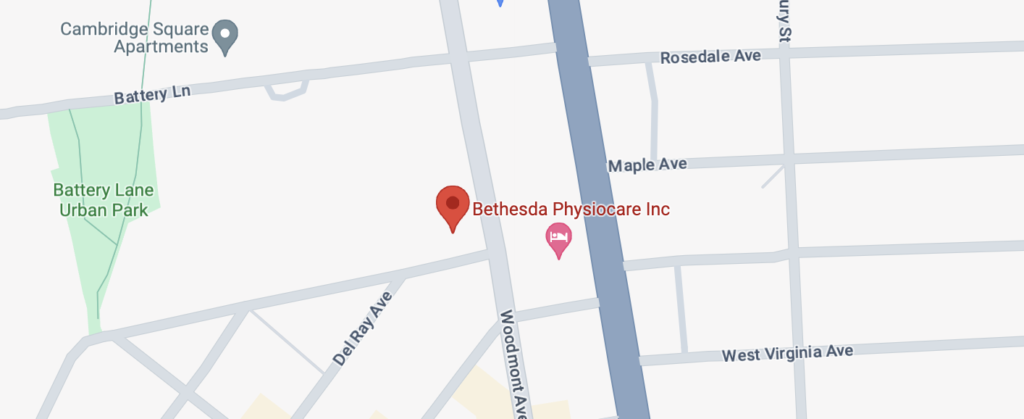
In the mid-1800s, Robert Schuman was forced to withdraw from performances due to severe injury to his hand. His excessive and manic practice habits led to serious damage that forced him off the stage—a reality that devastated young Schuman. Things worked out in the end for this talented young man—his pain would manifest in glorious musical compositions as his injury pushed him into the life of a composer.
Athletes are always front and center when it comes to injuries and the long journeys to recovery. Perhaps it is the nature of performance art that what happens behind the curtains tends to stay behind the scenes, so as not to disrupt the magic of the spectacle. And yet behind these breathtaking performances is often a body under tension and in need of rehabilitation.
Although different from athletes, performing artists like musicians and dancers often suffer from various musculoskeletal disorders and other injuries that require specialized attention. Physical therapy is here to help.
The Demands of Performance on the Body
Rates of injury for professional or student musicians are high. This is due to the fact that they often experience tension, pain, neuromusculoskeletal injuries as a result of long hours practicing an instrument. High-level playing requires distinctly developed sensorimotor and neuromuscular body systems with rapid and repetitive motions (Dommerholt, 2009).
Consider the position of a violinist, a stand-up bass player, or a pianist. The former must keep one arm in considerable tension with prolonged flexion of the head and shoulder, while the other arm is responsible for slow and controlled movement of the bow. The stand-up bass player must maintain a slightly twisted posture for long periods of time. The piano player sits for hours with wrists extended and high tension in the fingers (Dommerholt, 2010a).
As the hours compound every day in these stressed positions, many don’t receive the rehabilitation and rest that is required to keep the body healthy. While athletes also suffer shoulder and back pain, there are significant differences in the injury management and recovery protocols of performing artists (Chan, Ackermann, 2014).
Addressing the issues of a performing musician requires specialized knowledge and comprehension of the demands of their particular skill set.
According to the National Institute of Health, the neck, shoulder, and temporomandibular joints, fingers, and elbows are commonly affected areas for musicians.
Common instruments and their injuries can include:
- Violinists see jaw, back, neck, shoulder, and hands. These injuries can be either neural or muscular.
- Guitar players see nerve compression syndrome, tendonitis, tennis elbow, focal dystonia, arthritis.
- Piano players will also see tendonitis, tennis elbow, dystonia, and even back issues with prolonged back posture.
- Flutists experience problems with their wrists, hands, and fingers, as well as jaw and neck pain.
- Cello/bass/harp players will experience lower back pain.
Unlike athletes, many musicians don’t often receive the necessary education on the physical aspect of their playing and how to practice wisely and with proper mechanics.
The main causes of the above are issues with:
- Prolonged muscle tension
- Fatigue
- Lack of recovery time
- Unbalanced or overcompensated posture
- Neglecting proper warm-up routines
- Repetitive and rapid movements
- Movements that demand grip strength in awkward positioning
Common Injuries and What They Mean
Musician injuries can vary depending on their instruments and their individual habits but also on their natural anatomy. A guitar player with large hands, for example, can benefit from altering the size of the guitar neck. And yet even with these adaptations, musicians still experience discomfort and pain due to the strain they put their bodies through (Dommerholt 2000). Below are a few common musician injuries:
- Ulnar Nerve Entrapment: This refers to when the ulnar nerve in the forearm is compressed. This might occur at the wrist and elbow.
- Lower back pain: Pain in the lumbar spine is common with many performers that adopt a bad posture. It can refer to injury to a ligament or muscle.
- Neck pain: Tension and pain to the cervical spine that causes tension and loss of mobility and function.
- Tendinopathy: Defined as inflammation and irritation of a tendon. Tennis elbow is an example of common tendinopathy in musicians due to the strained positions of the hands and arms.
How Can Physical Therapy Help Performers and Musicians?
Small changes to practice regimen, posture, and consistent rehabilitation can make a significant difference to a musician’s longevity. A physical therapist that understands the specialized care required by musicians can be the difference between prevention and recovery or early retirement (Dommerholt 2010b).
Bethesda Physiocare founder Dr. Jan Dommerholt, featured in this Washington Post article about musician’s physical injuries, posits that understanding the individual musician’s approach to their instrument is key. This is why Dr. Dommerholt often asks musicians to bring their instruments to appointments. Did you know that Bethesda Physiocare features a piano to help evaluate keyboard players?
- Understanding the root of the problem. The first step to understanding what might be causing the pain or discomfort is learning about the everyday posture or positions the body is enduring. Looking at how a person plays an instrument and whether they have adopted bad positioning.
- Diagnosing the cause of the pain. Once we understand what might be causing the pain, we look at possible diagnoses. This might be looking at myofascial pain syndrome, tendonitis, carpal tunnel syndrome, nerve compression syndrome, and more.
- Finding the right physical therapy. Depending on the root of the problem and pain, the approach is tailored specifically to your circumstances. A combination of approaches such as movement therapies, posture correction, exercises, will promote correction of bad habits and enhance healing.
A Physical Therapist That Understands Your Pain
Physical therapy is not black and white and due to the specificity and complexity of many musician’s injuries and pain points, it is difficult to diagnose and/or address the problem without understanding individual circumstances and—in this case—instrument and practice habits. As a former musician, Dr. Jan Dommerholt has a unique insight and in-depth approach to the maladies that plague performers (Dommerholt & Norris, 1997).
Looking to find guidance with the improvement of performance or recovery from an injury? Call Bethesda Physiocare and see how physical therapy can help you play, heal, and manage pain.
Other Sources Used:
Chan, C., Ackermann, B. ( 2014, July 08) Evidence-informed physical therapy management of performance-related musculoskeletal disorders in musicians. Frontiers in Psychology. (5) doi: 10.3389/fpsyg.2014.00706
Dommerholt J. Posture. In: Tubiana R, Amadio P, eds. Medical problems of the instrumentalist musician. London: Martin Dunitz; 2000:399-419.
Dommerholt J. Performing arts medicine – instrumentalist musicians Part I: general considerations. J Bodyw Mov Ther. 2009;13:311-319.
Dommerholt J. Performing arts medicine – instrumentalist musicians Part II: the examination. J Bodyw Mov Ther. 2010a;14:65-72.
Dommerholt J. Performing arts medicine – instrumentalist musicians Part III: case reports. J Bodyw Mov Ther. 2010b;14:127-138.
Dommerholt J, Norris RN. Physical therapy management of the instrumental musician. In: Gallagher SP, ed. Physical Therapy for the Performing Artist, Part II; Music and Dance; Orthop Phys Ther Clinics N America. Vol 6. Philadelphia: W.B. Saunders Company; 1997:185-206.



